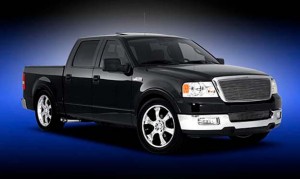How much do you really want that new sedan? Would you sit tight for that sports car? Will you wait several months for that big SUV?
Japan’s continuing crisis has already resulted in the loss of tens of thousands of new cars, trucks and crossovers, whether damaged by Friday’s massive earthquake, the subsequent tsunami, or simply through lost production, most Japanese automakers unsure when they’ll be able to get their assembly operations back up-and-running.
Even in the U.S., the natural disaster’s effects are being felt, Subaru halting production at its Indiana plant, while Toyota cuts all overtime. And, now, even some Detroit makers could feel the pinch if shortages of Japanese-made parts begin to develop. (Find out more…Click Here.)
“The impact of this has yet to unfold,” Mark Reuss, president of General Motors’ North American operations cautioned today, stressing that the quake’s impact on the Japanese supplier network could be “bigger than anyone knows today.”
One test will come if consumers begin to experience product shortages at the dealer level. American buyers have traditionally preferred to buy whatever they can find on a dealer lot, rather than placing a custom order that might take weeks, even months, to come through.
So, will buyers who can’t find what they want go somewhere else?
“Yes, they would,” suggested Art Spinella, “though that’s very brand specific,” adds the chief analyst for West Coast-based research firm CNW Marketing.
Among those likely to sit things out as long as necessary, he says, are “domestic truck buyers, who are very brand-loyal and will wait out a delay.”
Likewise, even if they couldn’t get the car they wanted for 90 days, only 8% of Honda customers would go somewhere else, CNW research suggests. That would jump to 14% of Toyota shoppers and 19% at Nissan. So-called second-tier Japanese brands, and Chrysler among American makers, would see potential shoppers go elsewhere rather quickly if the vehicles they want aren’t available.
Despite its booming sales, Subaru truck buyers are among the least loyal. Nearly 29% would go elsewhere if they had to wait 90 days. But only 13% of Subaru car buyers would grow impatient and move on.
Significantly, Ford has some of the most loyal buyers in the business. Only 6% of its customers would shift to another brand after a 90-day wait. And among Ford truck buyers, the figure plunges to 2.8%, according to CNW research.
The only brand that has a more loyal customer is Jeep, with 2.8% of buyers unwilling to wait 90 days if their SUV were unavailable.
Ford’s loyalty rate is a sharp turnaround from what CNW found in a similar study five years ago. Back then, said Spinella, “they’d abandon the brand in an eyeblink.”
The 2006 study found that Japanese customers, especially for top-tier makers Toyota, Nissan and Honda, would generally wait as long as necessary. Today, however, that’s only true of Honda, noted Spinella.
That’s bad news for the Japanese, who once could count on product shortages working to their advantage. Back in the 1980s, so-called “voluntary” import quotas let Japanese makers raise prices substantially higher than for comparable domestic products. And dealers were quick to tack on additional premiums.
Today, however, Spinella cautioned that Japanese makers might have to offer “loyalty bonuses,” another word for incentives.
The first Japanese assembly plants went back to work today, but those three Mitsubishi plants will likely have little impact on the potential problem. Toyota plans to start some parts plants back up, in the coming days, which could relieve pressure on the maker’s U.S.-based assembly lines, but it is already facing short supplies of some hotter models, notably including the Prius hybrid.
Nissan hopes to start rolling several of its lines by week’s end, but other plants will remain shuttered. At least 1,300 of the maker’s Infiniti luxury brand vehicles were destroyed by last week’s tsunami while waiting at the Port of Hitachi, which will complicate the maker’s situation.
If the bulk of Japanese vehicles operations aren’t back up within “30 to 45” days, the situation could grow dire, warned Spinella, but George Peterson, chief analyst with AutoPacific, Inc., told TheDetroitBureau.com that sizable problems could become apparent “by the beginning of April.”
While Japanese makers could be hit hardest, even Detroit brands are vulnerable. Japanese suppliers serve most domestic assembly lines. Japan produces about 22% of global automotive semiconductors, a product particularly difficult to find alternative sources for.
So, few in the industry want to see the situation drag on much longer.


